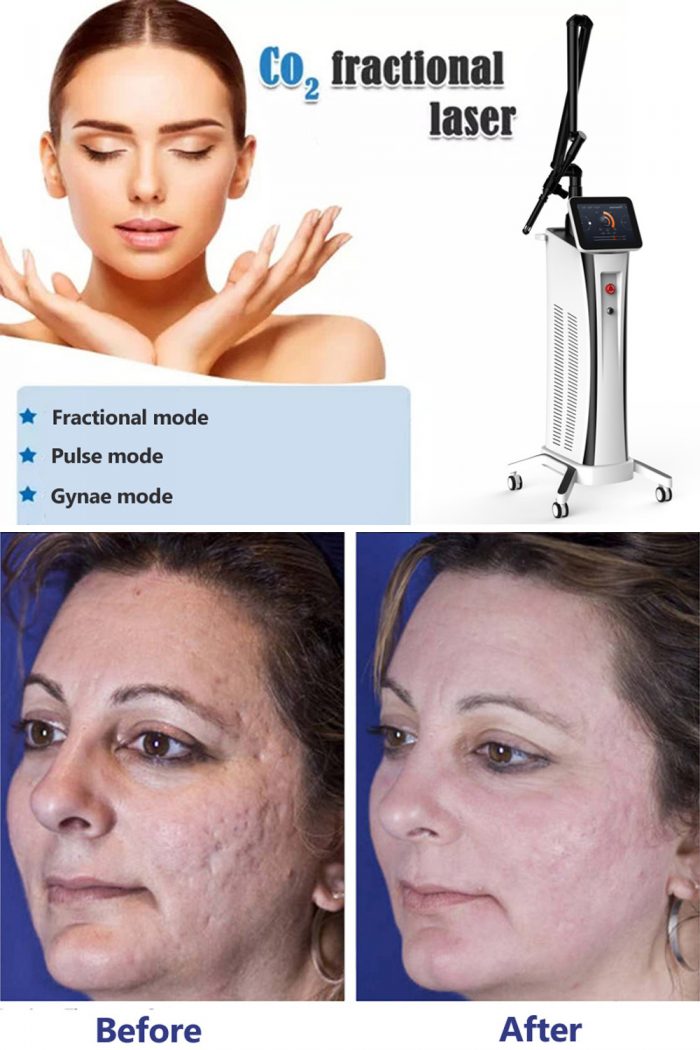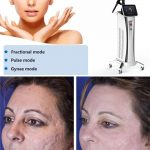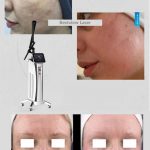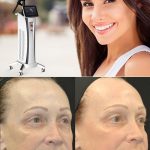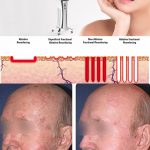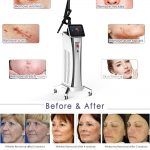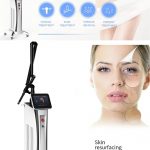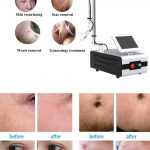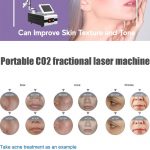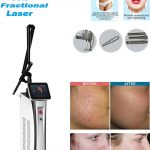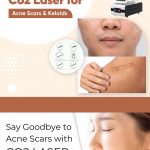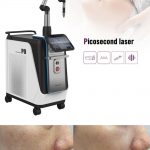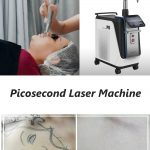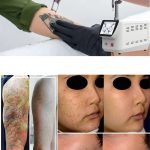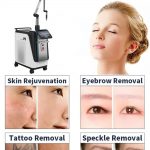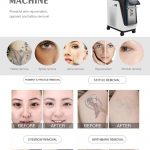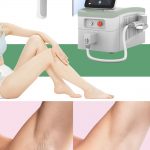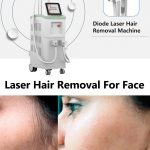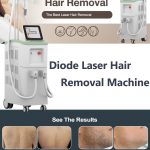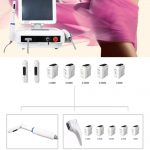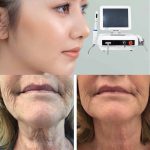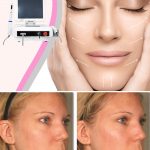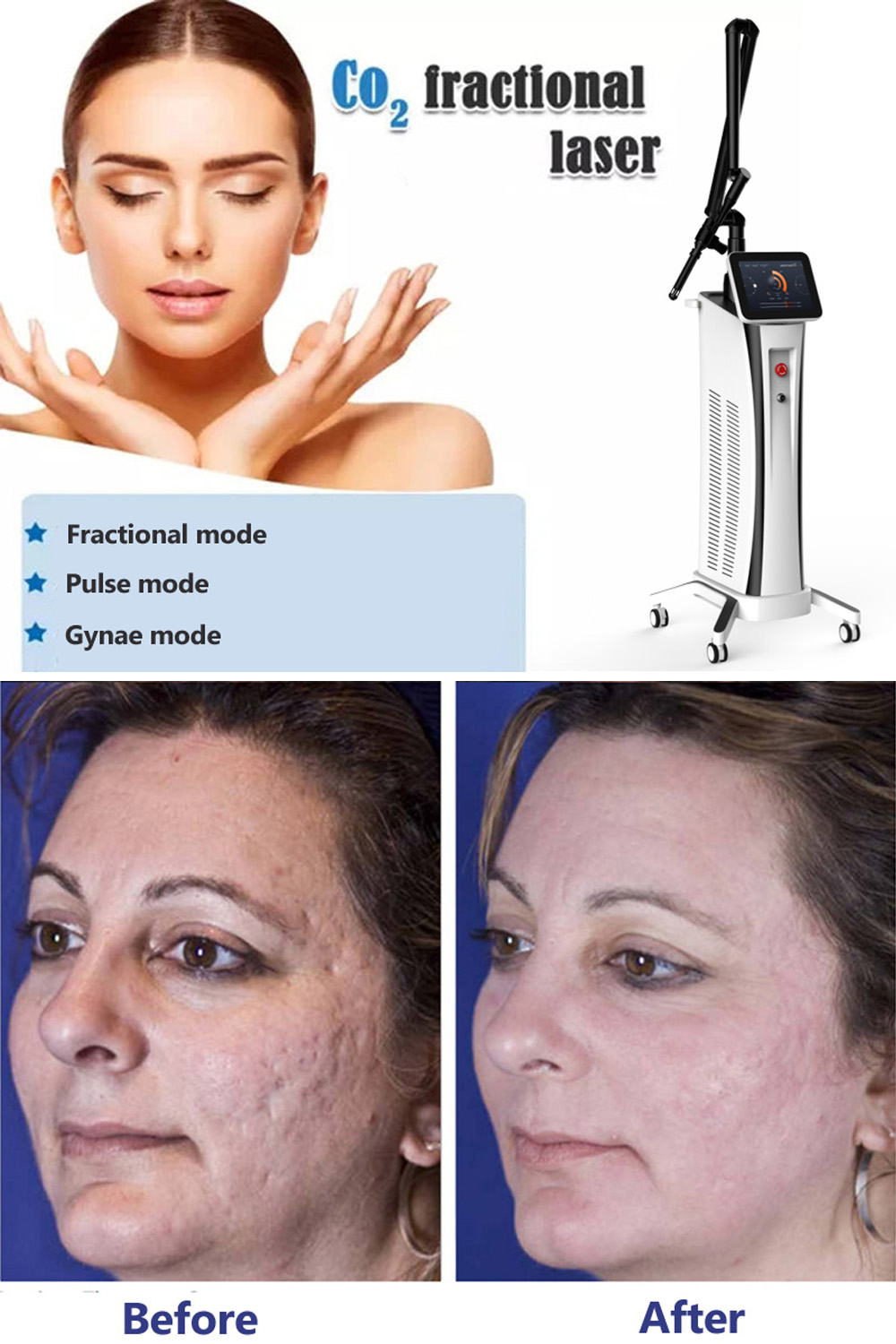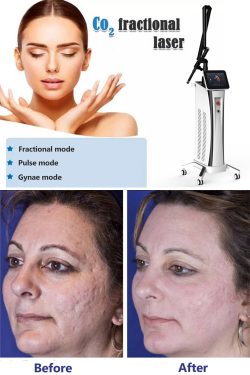Fractional CO2 laser resurfacing overview
CO2 laser is one of the original gas lasers. It was invented in 1964 and it is still one of the most useful lasers in the medical field. CO2 fractional laser machine is the highest-powered lasers that are currently available on the market. They are utilized for many different purposes in medicine, including skin resurfacing and skin rejuvenation. When this type of laser beam is introduced onto the skin, it evaporates the superficial layers of the skin that have been damaged and aged over the years. This process leads to tighter, rejuvenated skin and allows newer and healthier skin to replace the old, damaged skin.
What is the difference between a non-fractional laser and fractional laser?
Non-fractional lasers typically deliver laser beams and energy into the entire surface of the skin and treat the full outer sheet of the skin. However, this procedure has diminished in popularity due to its multiple disadvantages. Non-fractional lasers are generally more aggressive, require anesthesia, have intense downtime, cost higher, and most importantly, have a greater chance of complications compared to its fractional laser counterpart.
Fractional lasers deliver laser energy into the skin in a fractionated or “pixelated” form, which means that the laser light and energy is introduced into the skin by thousands of tiny dots, which creates micro-channel injuries in the skin. The advantage of this is that each injured column in the skin is surrounded by intact skin tissue, which aids in a faster healing period and less risk of complications. This procedure is much more gentle, well- controlled for risk and benefits, less costly, and does not need full anesthesia. Since this modality of laser treats a fraction of the skin, you benefit from repeated treatments, which eventually rejuvenates the entire skin surface after multiple treatments.
Advantage of CO2 fractional laser
The advantage and beauty of CO2 laser skin resurfacing is the ability to control the settings to provide appropriate intensity relative to the patient’s skin type and specific concerns. Control is the keyword when it comes to operating powerful lasers. Fractional technology allows us to control the laser power and intensity. Fractional lasers enable us to adjust the power and depth of the laser beams penetrating into the skin in addition to the spacing between the columns. As a result, a skilled and experienced physician is able to individualize the settings of the laser to provide the best result and minimize the risks.
How is a fractional CO2 laser performed?
After all of your questions and concerns are addressed, the designated area of treatment will be cleaned with a cleanser and alcohol. Numbing cream will be applied topically on the skin and left on for approximately 30 minutes. Subsequently, numbing cream will be wiped off of the skin and the laser treatment will be performed by one of our dermatologists. Since CO2 laser is a powerful tool and the setting is under control, you need only one “pass” over the skin within a single treatment, as opposed to alternative, non-ablative lasers, which may need several passes. After the laser treatment is completed, a healing ointment such as Aquaphor will be applied to the entire treated area. We will provide gentle cleansers, a tube of Aquaphor healing ointment, and hydrating lotions for your aftercare. Medical assistant will be present prior to, during, and after the procedure should you need assistance, comfort, or have any further questions.
Is CO2 laser painful?
The typical discomfort of fractional CO2 laser resurfacing treatment is described as a rubber band snapping against the skin. Since this laser treatment is a fractionated laser and a fragment of the skin is being treated across numerous tiny dots, the discomfort during the procedure is usually manageable with topical numbing cream.
How intense is the downtime after ablative resurfacing procedure
Healing phase may vary depending on many factors that include the following:
1.Location of the treated area – around the mouth peels and heals earlier, while forehead reaction is slower.
2.Depth and Intensity of the energy used – higher energy lasers or stronger acids for chemical peels are used to correct deeper skin damage, which require longer healing time.
3.Age of the patient and thickness of the skin.
4.Pre- and Post-procedure skin care performed by the patient.
5.Patient’s other associated diseases or regular medications used.
6.Patient’s “genes”, some people just heal faster.
What is the downtime after a CO2 fractional laser treatment?
Day 1: The day of the procedure you will show a skin reaction similar to a sunburn such as redness, tingeling, mild burning and swelling. Depth of the treatment defines the severity of the post treatment reaction.
Day 2: Skin is still red and swollen with no more burning or tingling.
Day 3: Swelling subsides and your skin starts developing pinpoint brown scabs at the site of the procedure.
Day 4: The skin around your mouth starts to peel.
Day 5: Midface treated area skin starts to peel.
Day 6: the last area, forehead skin peels.
Day 7: In general, at the one week mark, the treatment is completed. At this time, your skin will look fresh, pink, and new. Remember thereafter you must baby your skin by using moisturizer regularly, remain well hydrated and shield your treated skin from the sun exposure.
Week 2 and after: Healing and repairing of the deeper layer of the skin is in process creating tissue remodeling and collagen synthesis.
What is the post-CO2 laser procedure care instruction?
Adhering to pre- and post-care instructions is crucial to achieve expected final results, ease the healing phase, and diminish risk of complications.
What is the cost of the Fractional CO2 laser?
Beauty clinic often receive phone calls inquiring about the cost of laser treatments. Imagine! You can’t call a store and ask how much is a jacket? As you know the prices of ‘a jacket’ depends on the brand, style, pattern, fabric, etc. Similarly, there are many factors that dictate the cost of laser procedures that must be determined after a face to face consultation.
Some of the factors included, but not limited to, are type and tone of the skin, the severity of damage or aged skin, depth and type of the scarring, size and location of the scarring, number of treatments needed, time frame available, and many more other factors.
Who is not a candidate for CO2 laser treatment?
1.Have very dark or medium-dark skin tones, since this can result in post inflammatory hyperpigmentation, however, dermatologists will be able to assess the treatment options and further discuss if the CO2 laser device can be adjusted to be suitable for treatment.
2.Have a history of keloid formation, since this may put this person at risk for keloid formation after CO2 laser treatment.
3.Have active acne, we advise these individuals manage their acne prior to treating their acne scars with laser.
4.Can not dedicate time and effort for one week after the procedure for post-procedure care.
If you want results and need an effective, intense skin resurfacing treatment, or you suffer from severe acne scars, you might be a good candidate for fractionated CO2 laser to be performed by expert dermatologists.
Are there certain conditions or medication that would affect the outcome of CO2 laser treatment?
Always be open and honest with your doctor about your medical history and any medications or supplements you are taking. CO2 laser treatments, for example, may cause breakouts if you are prone to cold sores or fever blisters. Acne medications containing isotretinoin, such as Accutane can cause poor healing or scarring from laser resurfacing. In addition, common over-the-counter medications such as aspirin can increase the risk of post-procedure bleeding.
Diabetes and other chronic conditions can also impact laser resurfacing safety and results. To avoid healing complications and give your body the best chance for optimal results, you should also stop smoking at least two weeks before and after CO2 laser treatments.
